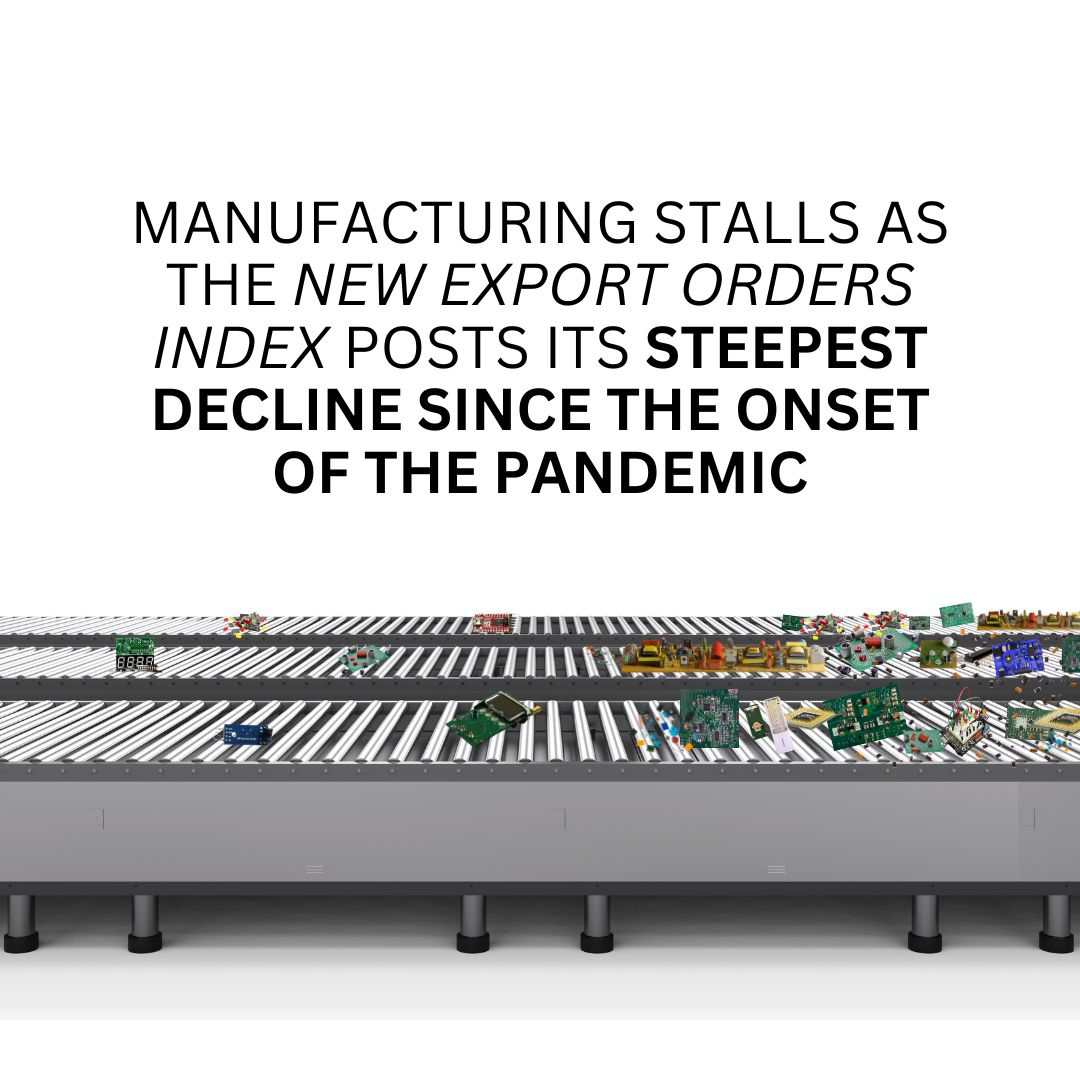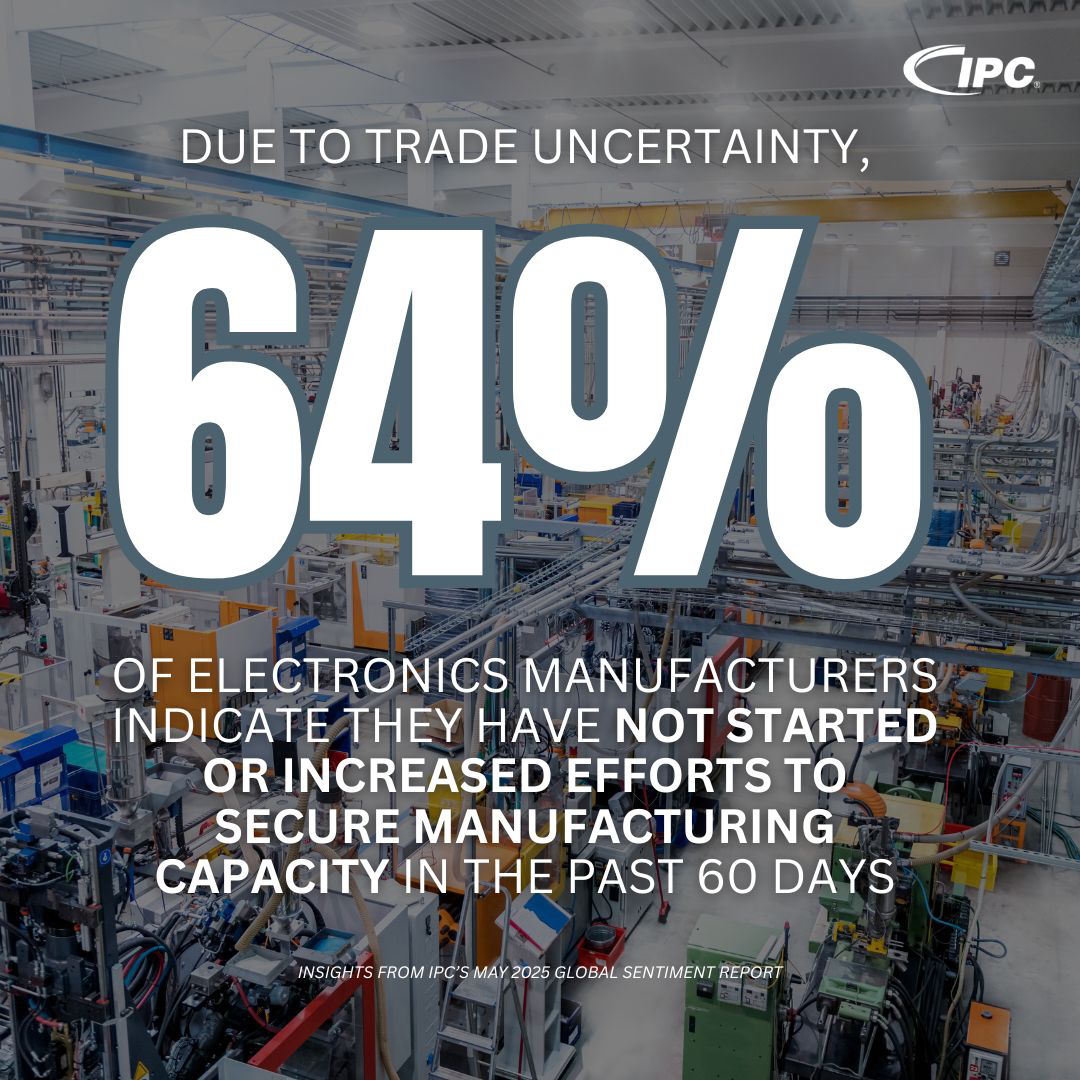 |
Dear [Colleague]:
For the first time in months, as this newsletter was being assembled on Thursday, there were no new policy developments this week that reshaped the trajectory of the electronics industry. However, there are worrisome indicators today and plenty of challenges on the horizon.
For starters, if President Trump decides to join in Israel’s assault on Iran over the risk of nuclear weapons proliferation, it could shake up all kinds of variables.
In Washington, the Senate version of President Trump’s tax-and-spending plan, the “One Big Beautiful Bill,” could come to the floor for votes as soon as next week – or it may get snagged and delayed. Once that is done, Congress will accelerate its pace on FY26 spending legislation and other bills, with several electronics-related programs at stake.
Worldwide, the United States’ 90-day review of its trade relationships with dozens of nations could come to a head in July. Meanwhile, policymakers and company leaders in all regions are navigating tricky decisions about investment, innovation, and resilience, with supply chains evolving rapidly around them. And the latest economic indicators in our industry are flashing warning signs.
Keep reading for your five-minute rundown of industry-relevant policy news and trends worldwide. And as always, let us know how we can advocate for your interests.
Chris Mitchell
Vice President, Global Government Relations
The Headlines at a Glance:
UNITED STATES
- FY26 Defense Bill May Be Positive for Electronics
- New U.S.–China Deal Maintains Tariffs, Eases Some Exports
EUROPE
- IPC and ASD Convene Summit on European Defense Electronics
MEXICO
- Report Highlights Mexico’s Growing Role in Post-Tariff Supply Chains
- Automotive Investments in Mexico Signal Opportunities for Electronics
ASIA
- India Looks to Deepen Electronics Manufacturing Footprint
- Vietnam and Japan Expand Cooperation on Supporting Industries
HELP US SPREAD THE WORD ON SOCIAL MEDIA
KEEP IN TOUCH WITH US
 |
According to IPC’s latest Global Sentiment Report, nearly two-thirds (64%) of electronics manufacturers worldwide say they haven’t started or increased efforts to secure new manufacturing capacity in the past 60 days due to rising trade tensions.
 |
FY26 Defense Bill May Be Positive for Electronics: The U.S. House Appropriations Committee last week approved its FY26 defense spending bill, totaling $831.5 billion and placing heavy emphasis on strategic competition with China. The bill includes $321 million for Defense Production Act (DPA) purchases, an encouraging topline, but with no specifics yet on how the funds will be allocated. The bill also includes $97.7 million for the Defense Credit Program to invest in the industrial base, a sign that Congress will continue to boost U.S. manufacturing capabilities. These programs have previously supported reshoring efforts in printed circuit boards (PCBs) and advanced packaging, which are critical technologies that underpin defense readiness. IPC will be seeking additional details and aiming to ensure that PCBs, advanced packaging, and other electronics technologies are part of the defense funding conversation. IPC Contact: Richard Cappetto
New U.S.-China Deal Maintains Tariffs, Eases Some Exports: The Trump administration last week reached a new trade framework with China, signaling a shift in tone while leaving many details still unresolved, reports The New York Times. While formal text has not yet been released, the deal reportedly maintains U.S. tariffs that can reach a combined 55%, including the tariffs from Trump’s first term, plus this year’s 10% “reciprocal” tariff and a 20% fentanyl-related tariff imposed under the International Emergency Economic Powers Act (IEEPA). This structure largely reflects the status quo as of 14 May for many electronics-related imports.
In return, China has reportedly agreed to resume exports of rare earth minerals, a key supply chain concern for electronics, clean energy, and defense sectors. The U.S. is also expected to ease certain export controls on advanced semiconductors, although timelines and enforcement mechanisms remain unclear.
IPC welcomes this progress but remains concerned about ongoing compliance burdens and policy uncertainties facing electronics manufacturers. IPC weighed in officially on the negative impacts of tariffs on our industry, and we will continue to call for a stable, strategic trade policy that strengthens America’s electronics supply chains. IPC Contact: Richard Cappetto
 |
IPC and ASD Convene Summit on European Defense Electronics: Last week, IPC and the Aerospace, Security and Defense Industries Association of Europe (ASD) jointly hosted the first-ever IPC-ASD Europe Defense Electronics Summit, bringing together 70 leaders from across the electronics manufacturing supply chain. Participants included OEMs, EMS providers, PCB and semiconductor manufacturers, and wire harness suppliers, alongside 10 senior policymakers, including representatives from the Cabinet of the Commissioner for Defense and Space and three European Commission directorates general. The discussion focused on the challenges facing Europe’s defense electronics base and the urgent need for a more resilient ecosystem. Industry leaders emphasized the strategic importance of electronics to Europe’s security goals and called for this to be reflected in future policy and investment decisions. Check out the recent IPC white paper on European defense electronics. IPC Contact: Alison James
 |
Report Highlights Mexico’s Growing Role in Post-Tariff Supply Chains: A report from Bank of America finds that Mexico is emerging as a key beneficiary of shifting global supply chains in response to U.S. tariffs. An article from Investopedia says that while the goal of recent trade measures has been to boost U.S. domestic manufacturing, only 20% of analysts surveyed expect significant reshoring to the U.S. Instead, many firms are opting for nearshoring to Mexico, particularly in sectors like electronics, transportation, and labor-intensive manufacturing. Analysts point to Mexico’s geographic proximity, USMCA trade advantages, and expanding industrial base as key drivers. For the electronics industry, these trends underscore Mexico’s growing importance as a regional hub for production and supply chain realignment. IPC Contact: Lorena Villanueva
Automotive Investments in Mexico Signal Opportunities for Electronics: A wave of recent announcements from global automakers and suppliers is highlighting Mexico’s growing role in advanced manufacturing. According to Freightwaves, China’s TYW Manufacturing has launched a $50 million facility in Irapuato to produce electronic dashboards for Kia and Stellantis, creating 500 jobs and expanding the region’s footprint in auto electronics. Meanwhile, GPI News reported that Mazda, Honda, and Toyota are deepening their long-term presence in Guanajuato with investments tied to clean energy, electrification, and tech-driven production. In a separate development, China’s Wasion Group has inaugurated a $7.3 million plant in Irapuato focused on electrical components, according to Mexico’s Secretariat of Economy. Kia Motors also confirmed via Cluster Industrial that it will continue operations in Nuevo León and invest another $2 million this year to expand its technology training center. Finally, Nissan announced that it is consolidating production in Mexico rather than downsizing, moving pickup manufacturing from Argentina to Morelos and reaffirming its Aguascalientes plant as a key global site. For the electronics industry, these developments signal rising demand for components such as PCBs, sensors, power systems, and embedded software, particularly as vehicle platforms grow more electric and connected. IPC Contact: Lorena Villanueva
 |
India Looks to Deepen Electronics Manufacturing Footprint: India is aiming to expand its role in global electronics production, with new reports highlighting a push to attract investment and ease supply chain challenges. According to Business Standard, the Indian government is exploring ways to streamline tech import approvals and strengthen incentive schemes under its Production-Linked Incentive (PLI) program. These efforts follow recent concerns from electronics firms about approval delays affecting production timelines. As companies worldwide continue diversifying beyond China, India's steps to reinforce policy support and reduce red tape are being closely watched. For the electronics industry, these developments could influence regional sourcing strategies, investment decisions, and the pace of global supply chain reconfiguration. IPC Contact: Gaurab Majumdar
Vietnam and Japan Expand Cooperation on Supporting Industries: Vietnam and Japan are stepping up efforts to strengthen their mutually supporting industries, aiming to boost localization and reduce reliance on imported components. As reported by VnEconomy, both governments have agreed to expand cooperation in areas such as materials, components, and precision manufacturing. While Vietnam has made progress in attracting global electronics investment, experts cited in the report say domestic suppliers still face challenges in meeting quality and volume requirements. The renewed Vietnam-Japan partnership includes technical training, business matching, and support for SMEs, factors that could improve local capacity and support a more resilient regional supply chain. These efforts are especially relevant to electronics manufacturers seeking to localize operations while maintaining global standards. IPC Contact: Chris Mitchell
 |
IPC Midyear Economic Check-In, Online, July 8: We’re at the midpoint of 2025, and the global economy is walking a tightrope between resilience and risk. What does this mean for the electronics industry? Join us for a live webinar with IPC Chief Economist Shawn DuBravac, Ph.D., CFA, who will offer a data-driven, industry-relevant look at what lies ahead, from supply chain disruptions to geopolitical flashpoints. Learn more and register here.
 |
 In this month’s Industry Intelligence Insights, IPC Chief Economist Shawn DuBravac says the data paints a concerning picture beneath the surface of broader economic optimism. |
 According to IPC’s latest Global Sentiment Report, nearly two-thirds (64%) of electronics manufacturers say they haven’t started or increased efforts to secure new manufacturing capacity in the past 60 days due to rising trade tensions. |
KEEP IN TOUCH & JOIN OUR EFFORTS Meet the IPC GR Team: Whether it is engaging with policymakers in the Americas, the European Union, or Asia, the IPC Government Relations (GR) Team proactively seeks opportunities to educate, inform and influence policymakers on policies that spur innovation, growth and competition, while protecting human health and the environment. But our success depends on your support and engagement. Learn more and get involved in IPC advocacy today! IPC Contact: Chris Mitchell.
In the U.S., take IPC’s five-minute public opinion survey and contact your elected officials via the IPC Action Alert Center. Peruse our global Advocacy pages on IPC.org or our European pages on IPC.org and LinkedIn. Subscribe to this IPC Global Advocacy Report: If you are a member of IPC, manage your e-mail preferences and opt in to receive all “Advocacy” updates. If you are not an IPC member — or if you are not sure — please send a note to friends@ipc.org, and our staff will add you to the list. See prior editions of Global Advocacy Report. Please contact one of us via the links above if you have any questions or insights to share!
|


